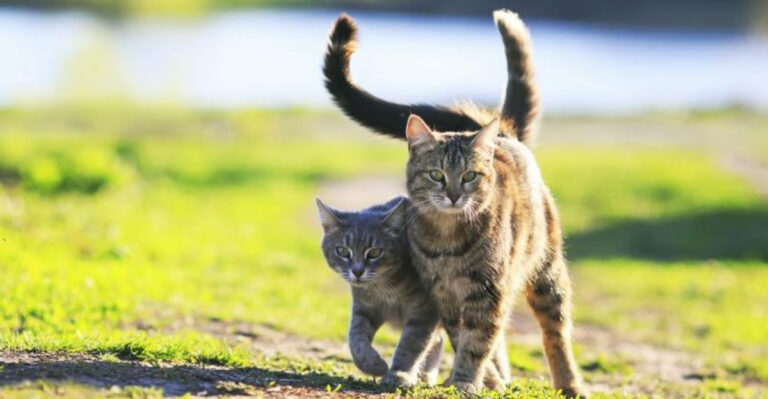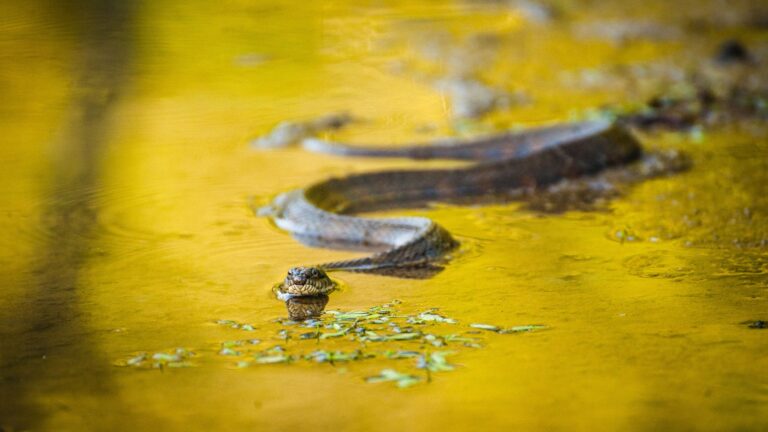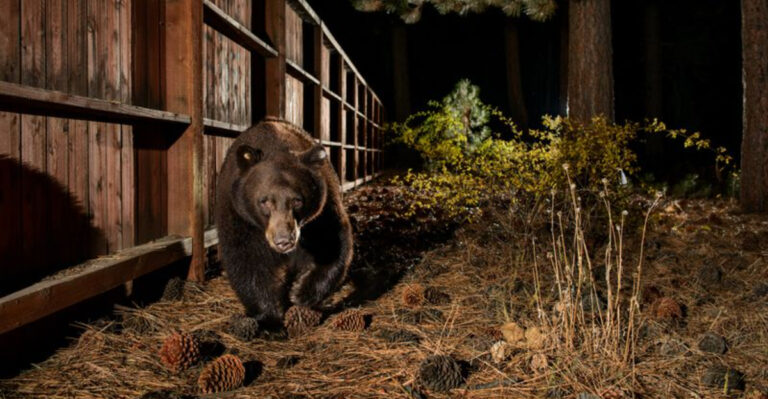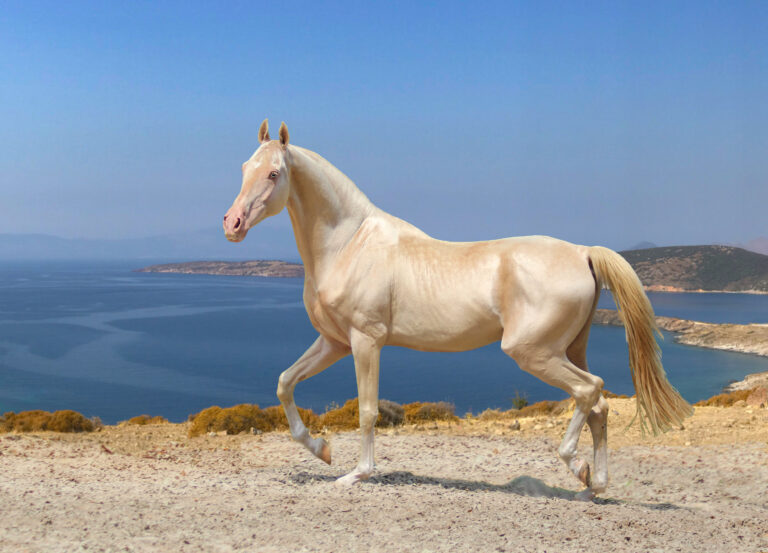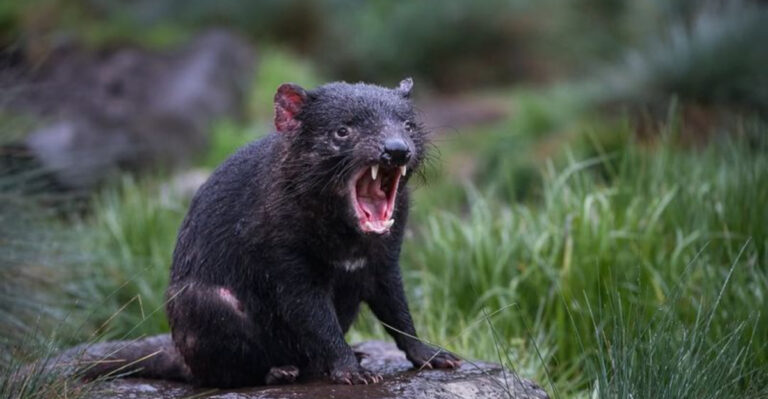12 Amazing Airborne Animals That Glide Without Wings
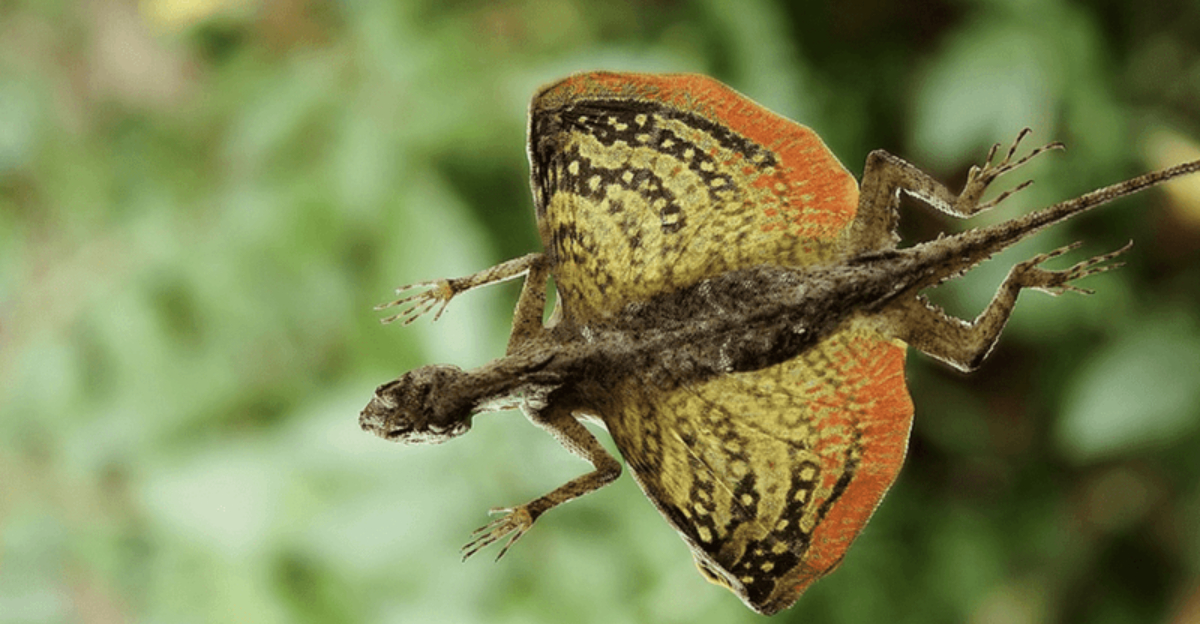
Nature has found incredible ways for creatures to move through the air without actual wings. Animals from different families have evolved special adaptations that let them glide from place to place.
Some use skin flaps, others have webbed feet, and a few have unique body shapes that catch the air just right. These remarkable gliders show us that flying isn’t just for birds and bats!
1. Flying Squirrel
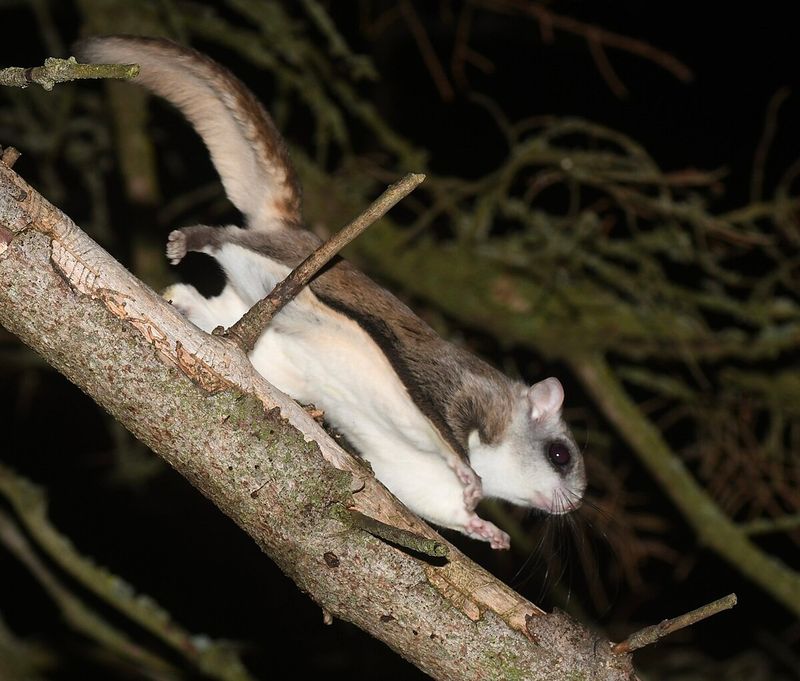
Flying squirrels use a stretchy membrane called a patagium that extends from their wrists to ankles. When they jump and spread their limbs, this furry parachute catches air, letting them glide up to 150 feet between trees!
These nocturnal acrobats don’t actually fly—they launch from high branches and steer by adjusting their legs and using their flat tail as a rudder.
2. Flying Fish
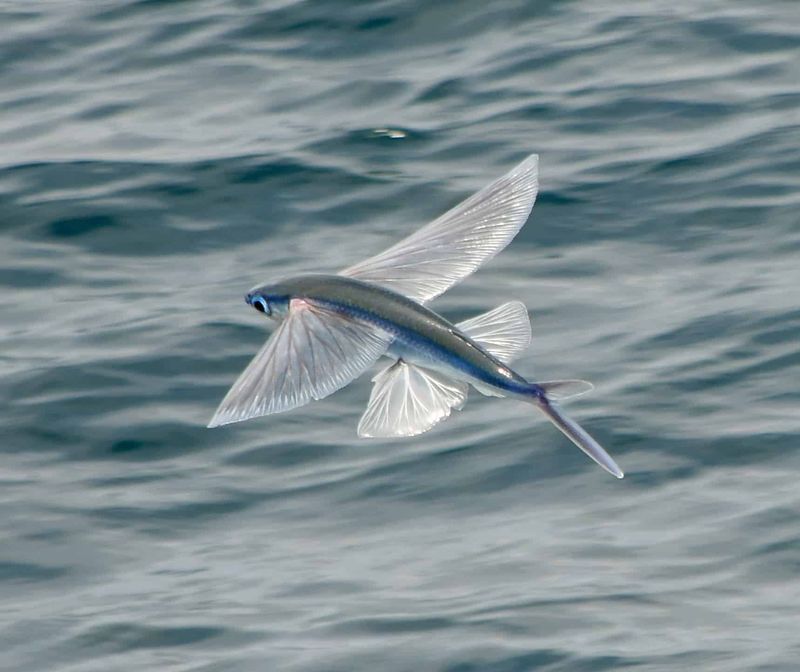
Ever seen fish take to the sky? Flying fish can burst from the water at 35 mph, gliding up to 650 feet using their oversized pectoral fins as wings.
These oceanic daredevils evolved this ability to escape predators. By rapidly beating their tail underwater, they build enough speed to launch themselves into the air where they can soar for impressive distances.
3. Colugos
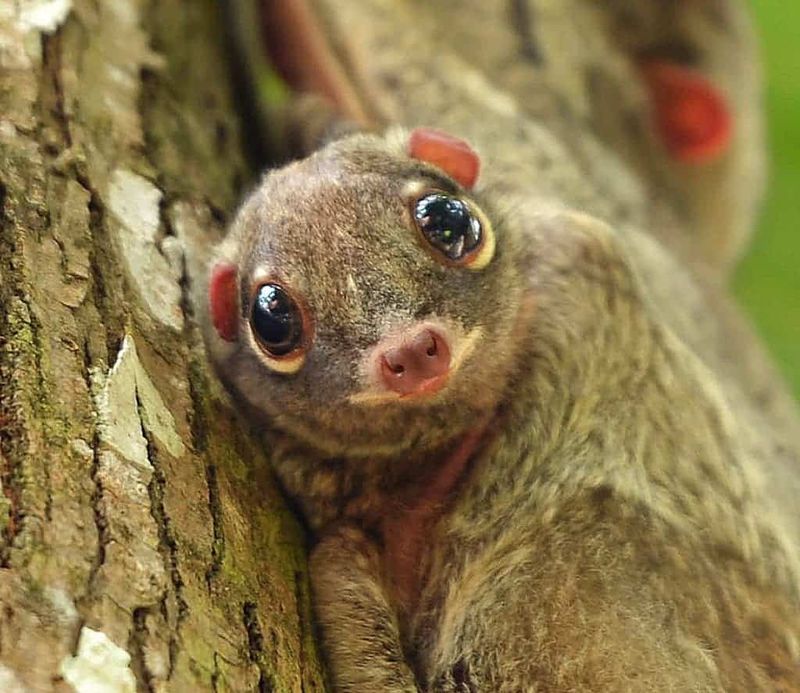
Often mistaken for flying lemurs, colugos possess the most extensive gliding membrane of any mammal. Their patagium stretches from neck to fingertips, toes, and tail tip.
These shy creatures can glide over 200 feet with minimal height loss. Unlike other gliders, colugos even have webbing between their fingers and toes for maximum surface area!
4. Sugar Glider
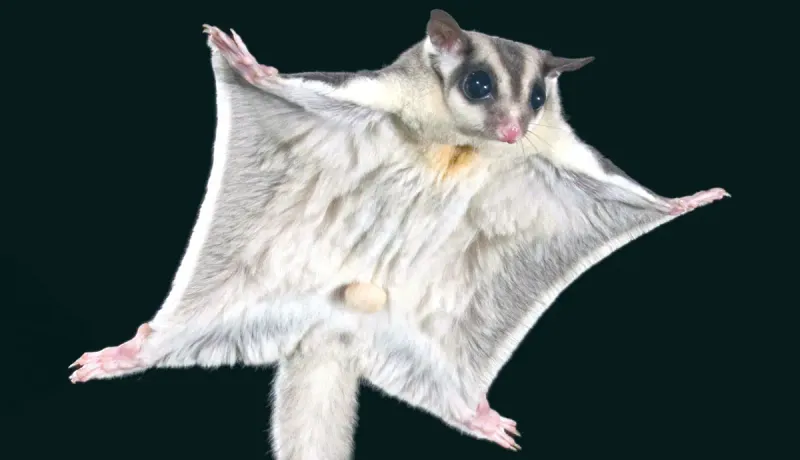
No bigger than a hamster, sugar gliders pack serious aerial skills into their tiny frames. Their membrane stretches from wrist to ankle, creating a square-shaped sail when extended.
Native to Australia, these marsupials can glide up to 150 feet in a single jump! Their fluffy tails aren’t just cute—they function as effective rudders for steering through the forest canopy.
5. Flying Dragon Lizard
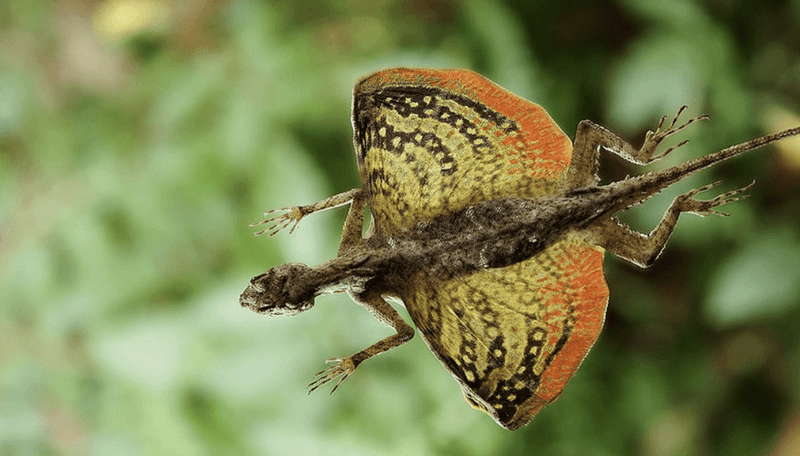
Unlike other gliders, Draco lizards use modified ribs—not skin between limbs—to create their wings. These elongated ribs extend outward, supporting colorful flaps of skin.
When threatened, these 8-inch reptiles can launch from trees and glide up to 30 feet away. Males flash their bright wing undersides during elaborate courtship displays, resembling tiny flying dragons from folklore!
6. Wallace’s Flying Frog
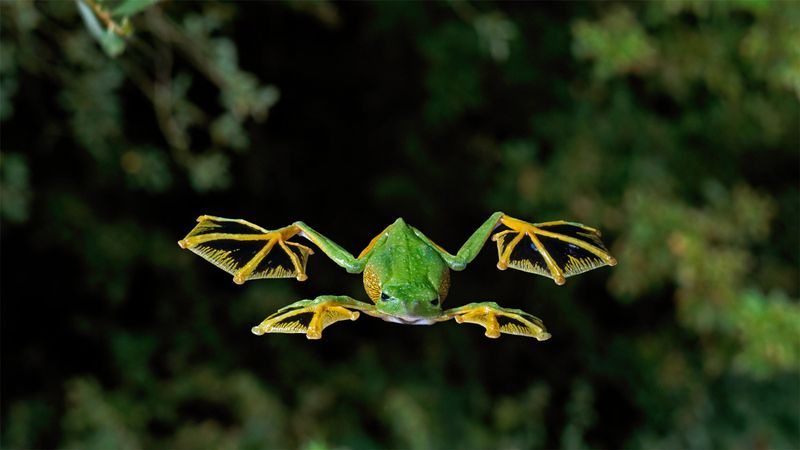
Named after naturalist Alfred Wallace, this frog sports enormous webbed feet that work like parachutes. The webs between its toes can expand to create surface area nearly twice its body size!
When leaping from high branches, it spreads its limbs into an X-shape. These green gliders also have specialized toe pads that help them stick perfect landings after soaring through rainforest air.
7. Petaurus
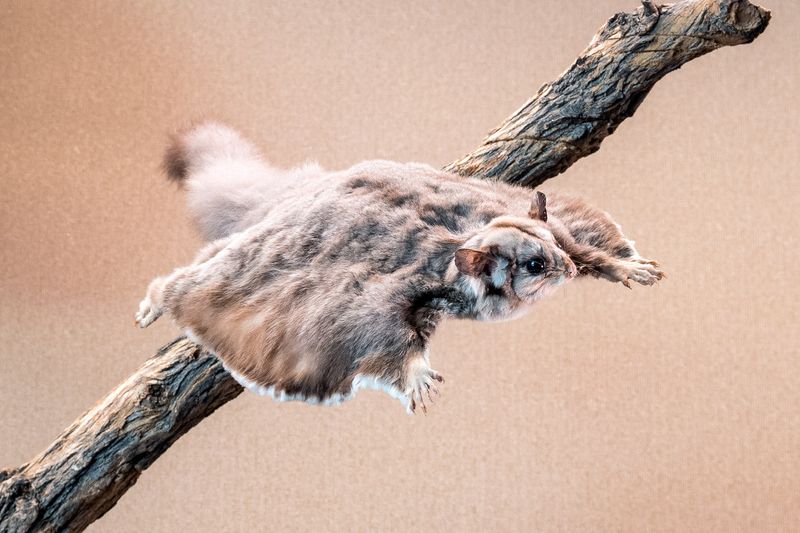
Australia hosts several Petaurus species beyond the famous sugar glider. The squirrel-sized greater glider can soar over 300 feet in a single bound—longer than a football field!
These marsupials have specialized cartilage extending from their elbows that supports their gliding membrane. Sharp claws help them grip tree trunks upon landing after their impressive aerial journeys.
8. Gliding Ant
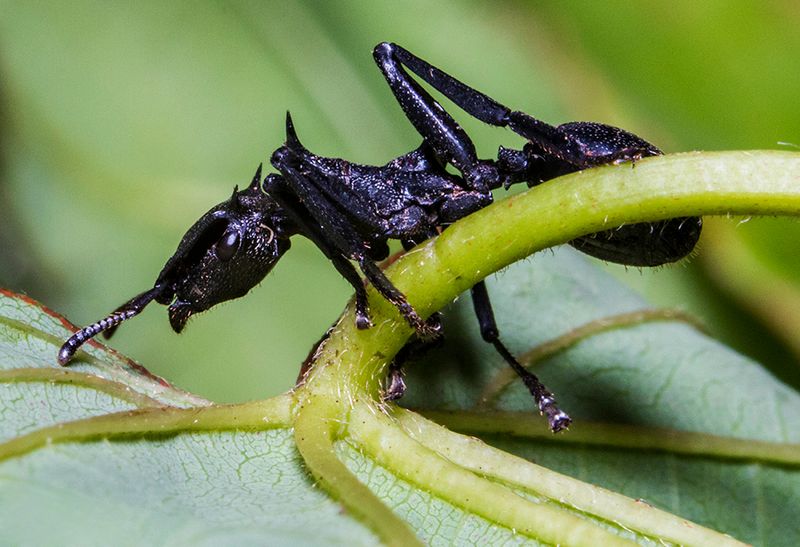
Canopy ants perform one of nature’s most surprising aerial feats. When falling from treetops, certain species can direct their descent by flattening their bodies and splaying their legs.
These tiny gliders can actually steer themselves back to their home tree trunk! This remarkable adaptation prevents them from reaching the dangerous forest floor where predators lurk, instead landing safely on familiar bark.
9. Marsupial Glider
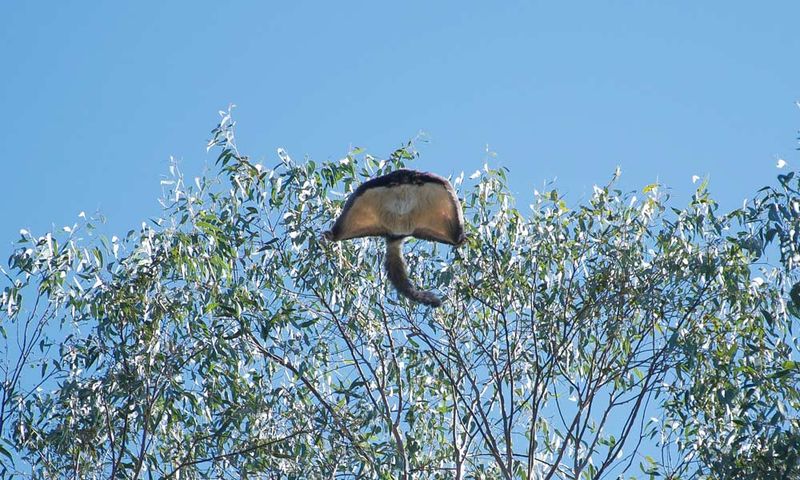
The yellow-bellied glider, Australia’s aerial acrobat, can soar over 150 feet between eucalyptus trees. Its membrane creates a square-shaped sail when fully extended during flight.
Unlike some gliders, these social creatures communicate with loud calls that echo through forests at night. They use specialized incisors to cut into tree bark, harvesting sap that forms a key part of their diet.
10. Bamboo Rat
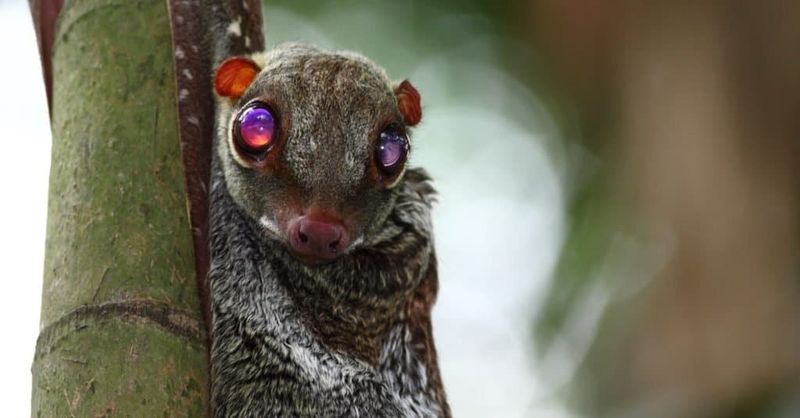
The Laotian giant flying rat defies expectations with its gliding abilities. This bamboo-dwelling rodent has small membranes between its legs that allow limited but effective gliding between tall stalks.
Unlike dedicated gliders, these rats use their adaptation primarily as an emergency escape mechanism. When predators threaten, they can launch themselves to safety, covering distances up to 15 feet with surprising accuracy.
11. Silver Y Moth Caterpillar
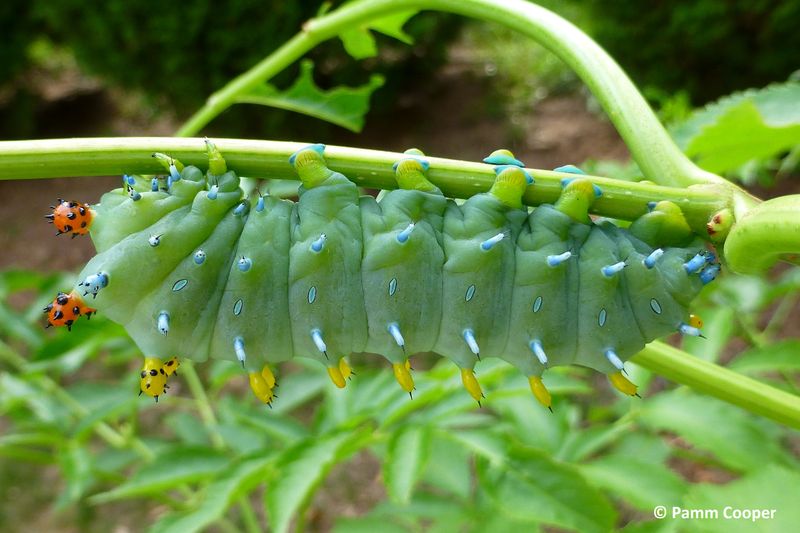
Who knew caterpillars could fly? Silver Y moth larvae shoot silk threads that catch the wind, allowing them to “balloon” for dispersal. This technique can carry them hundreds of feet into the air!
Scientists discovered these caterpillars can sense electric fields and release silk at optimal times. Their aerial journeys help them find new food sources and escape crowded plants—an unexpected adaptation for a creature without wings.
12. Frogfish
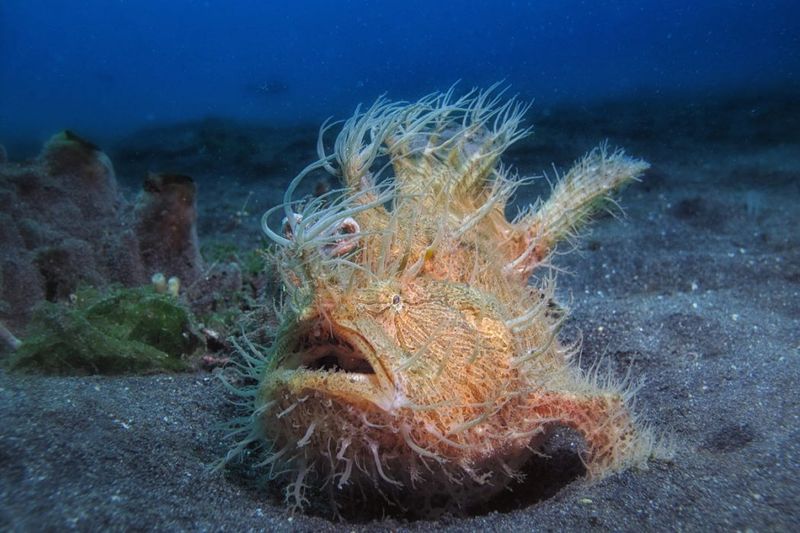
Frogfish might seem like unlikely candidates for “flight,” but these bizarre marine creatures have a unique gliding method underwater. By rapidly expelling water through gill openings, they achieve jet propulsion!
Their modified pectoral fins spread like wings as they zoom through water. This strange locomotion helps these ambush predators rapidly pursue prey or escape danger—proving gliding adaptations exist even beneath the waves.


